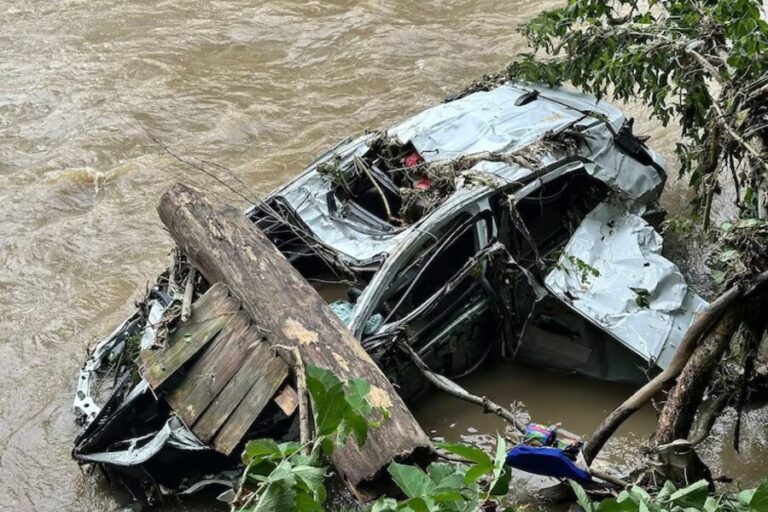The death toll from the severe flash flooding that swept through northern West Virginia over the weekend has risen to six, with two individuals still unaccounted for, Governor Patrick Morrisey confirmed Monday. As rescue and recovery efforts continue, authorities have declared a state of emergency and deployed both the West Virginia National Guard and Federal Emergency Management Agency (FEMA) teams to the hardest-hit areas.
“This is a devastating event for our state. West Virginia has been hit very, very hard,” Morrisey said during a press briefing. “We are doing everything in our power to find the missing, support affected families, and stabilize impacted communities.”
Areas Hit Hard by Sudden Deluge
The flooding was triggered by a sudden and intense downpour, which dropped between three and four inches of rain over a short period, overwhelming local waterways and drainage systems. Communities in Ohio and Marion counties, including Wheeling, Triadelphia, and Valley Grove, bore the brunt of the storm. The deluge caused rapid rises in water levels in Middle Wheeling Creek, Little Wheeling Creek, and along US Route 40 (National Road), inundating roads, damaging infrastructure, and forcing emergency evacuations.
One of the most alarming incidents occurred in Fairmont, the seat of Marion County, where a residential structure partially collapsed on Sunday. The collapse, caught on camera, showed floodwaters surging out of the severely damaged building as emergency crews worked to secure the area. The cause of the structural failure remains under investigation, according to the governor.
Displacement and Shelter
Authorities have relocated displaced residents to Fairmont State University, where emergency shelter and aid are being provided. The total number of people displaced has not yet been disclosed, but officials emphasize that humanitarian needs are growing, particularly as the weather forecast remains uncertain.
“We’re working around the clock to provide food, shelter, and safety for those affected,” said a representative from the West Virginia Emergency Management Division. “This is a dynamic situation, and we urge everyone in affected areas to remain vigilant.”
Ongoing Response and Next Steps
The West Virginia National Guard is assisting in search-and-rescue operations, debris clearance, and logistical support. Meanwhile, FEMA personnel are on-site to assess damage and coordinate federal assistance. Additional rainfall is forecast over the coming days, which may exacerbate existing flooding and hamper recovery operations.
“We are closely monitoring the weather,” said Gov. Morrisey. “We ask residents to stay alert, follow local emergency instructions, and avoid traveling through flooded areas.”
Why This Matters
This incident underscores the growing vulnerability of Appalachian communities to flash flooding—a threat amplified by increasingly erratic weather patterns. The event also highlights challenges in infrastructure resilience, emergency preparedness, and real-time crisis response in rural and semi-urban environments.
For West Virginia, a state with a history of deadly floods—including the 2016 disaster that claimed 23 lives—this latest tragedy revives painful memories and urgent questions about mitigation, investment, and long-term climate adaptation.
What’s Next
- Authorities continue searching for the two missing persons.
- Structural assessments and damage evaluations are underway across multiple counties.
- Residents are advised to stay updated through local emergency broadcasts and official weather advisories.
- FEMA is expected to announce federal disaster relief measures in the coming days.
If you are in the affected area and need assistance, call 211 or visit your county’s emergency management website for shelter locations and aid services.
